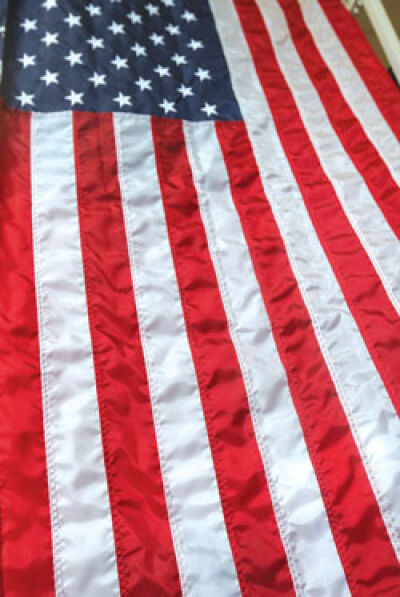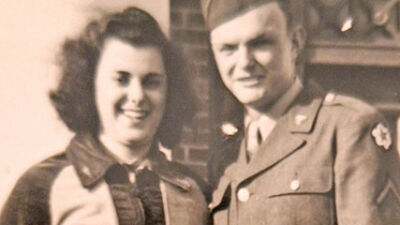
An American flag is displayed inside American Flag and Banner Co. in Clawson.
Photo by Patricia O’Blenes
METRO DETROIT — As Fourth of July parades ready for substantial crowds, families prepare for get-togethers with loved ones, and the feeling of patriotism is in full swing, the American flag will be on display tenfold.
While patriotic behavior is appreciated, it’s important to understand the proper etiquette of displaying the American flag.
Mike Sand is the public information officer of the Veterans of Foreign Wars Post 6691 in Fraser and a Vietnam veteran, and Sand said there are common parts of the U.S. flag code that are overlooked today.
“There’s a lot of standard procedures you have to follow, but what amazes me is a lot of people don’t,” Sand said. “For example, you’re not supposed to wear the American flag as clothing, and people do that. You’re not supposed to carry the flag flat, and people do that. You’re not supposed to put anything above the American flag, and somebody’s done that. Basically, you either respect the flag or trash the flag, if you will.”
Sand has been a part of the VFW Fraser post since 1974.
While some procedures may be overlooked, Sand said there are also common misconceptions when it comes to flag etiquette.
“A lot of people go, ‘Oh, you don’t have a light on your flag,’” Sand said. “You don’t have to have a light; you just need to be able to see it. Another one is, ‘Oh, you can’t burn the flag.’ Well, we call it ‘retire.’ We retire the flags by burning, because that’s what the flag code suggests.”
For people who are uncomfortable with ‘retiring’ their American flags themselves, the VFW, local Scout troops, and local flag shops such as American Flag and Banner Co. in Clawson will accept your flag for retirement.
Jane Miles, the owner of American Flag and Banner Co. for 44 years, said there’s one aspect of flag etiquette that can be harmful to the flag if not followed.
“You should take it down in inclement weather, because it’s beating up the flag for no reason, but people don’t go out in the middle of a tornado to take it down,” Miles said. “If it’s out there, it stays out there in bad weather. It’s not respectful to the flag, but if you’re a true patriot that wants to fly it 24/7, then you’re very respectful. It goes back and forth.”
It’s tough for someone who’s not experienced in the United States flag code to know if there’s a right or wrong to certain situations regarding the flag, but that’s why Miles said people shouldn’t be discouraged if neighbors offer advice.
At the end of the day, Miles said, the most important thing is that the flag is actually being represented and flown.
“I don’t say too much because they’re at least flying a flag,” Miles said. “There’s a lot of people out there that don’t have much commitment to our flag anymore. Neighbors are really good about letting you know when your flag goes shabby. They’re really the best flag police there are.”
For more information on the U.S flag code or flag etiquette, visit uscode.house.gov or vfw.org/community/flag-etiquette.
Three other flag etiquette facts:
• When grouped with other flags, the American flag is positioned to its own right (viewer’s left).
• When flown horizontally, the stars need to be in the upper left corner. Vertically, stars need to be in the top left corner.
• The American flag is above any other flag on the same staff. Flags of other nations are at the same height if on different staffs.
 Publication select ▼
Publication select ▼






















